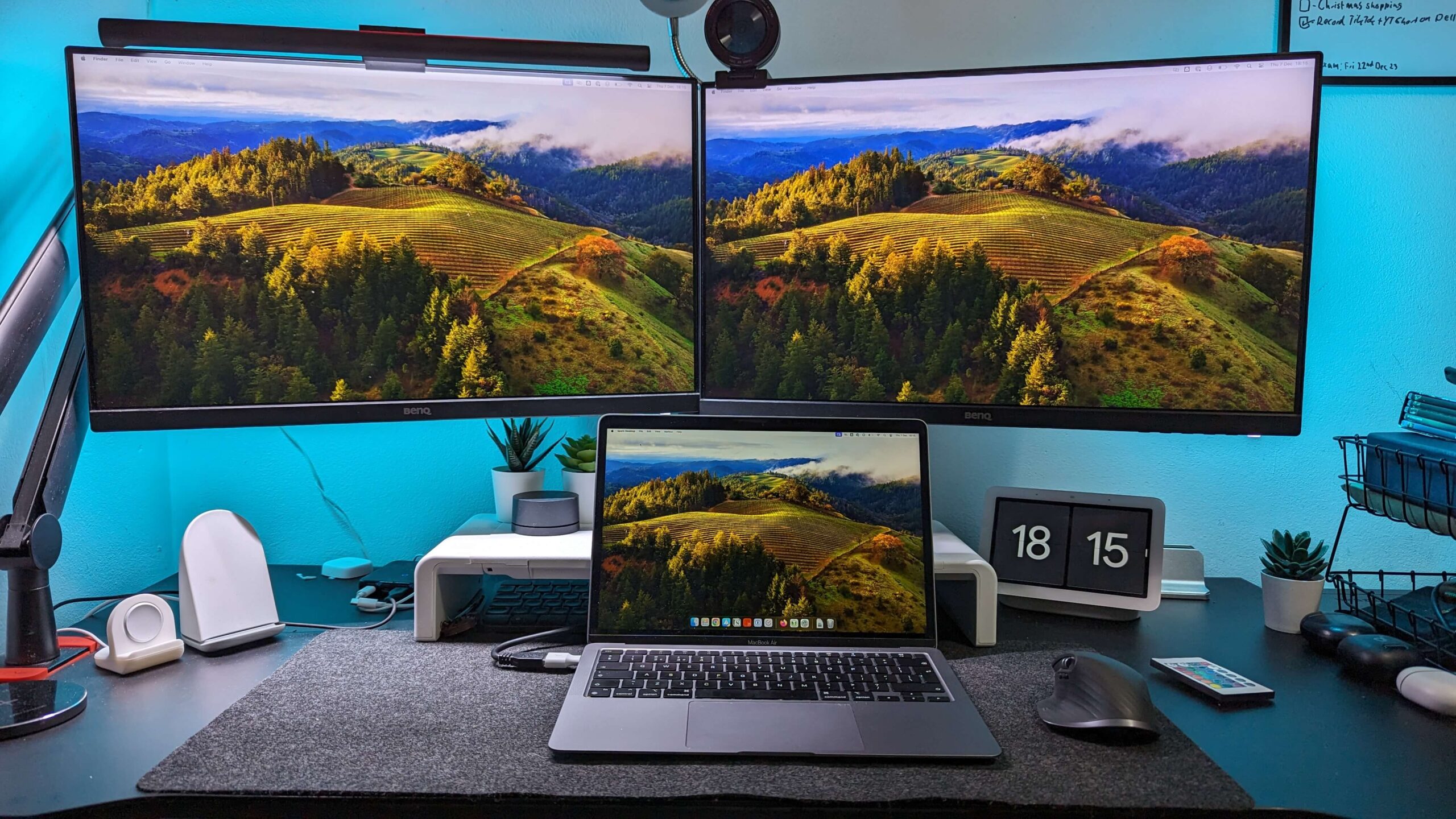How I Connect My M1 Macbook Air to Multiple Monitors
The solution may surprise you!

I admit, I may have jumped into the M1 MacBook Air too quickly, but it was on such a good deal, I just couldn’t resist.
As somebody who often works from multiple monitors, I simply did not realise that there were going to be issues connecting it to my dual monitor setup.
It turns out that this model only supports one additional monitor, which in all honesty I could have probably coped with, but I think I would have found it incredibly difficult to adjust.
I guess I never really thought about it as my ancient MacMini supported multiple monitors incredibly well.
I tried USB-C docking stations as well as HDMI to USB-C cables, but the best I was able to do was duplicate the screen on all 3 monitors using a USB-C docking station.
After searching the internet for answers, I found that several sources were recommending buying DisplayLink docking stations and that is exactly what I did.
What is a DisplayLink Docking Station?
A DisplayLink docking station is a device that allows you to expand the connectivity on your laptop. It often features several USB ports, an ethernet port as well as several display ports such as HDMI, DisplayPort and VGA.
DisplayLink technology allows you to transmit video, audio, and data through USB Ports and best of all they are compatible with a wide variety of laptops including MacBooks!
If you ever worked in a corporate desk job, you may have used a DisplayLink docking station without even knowing it.
It’s important to understand that in order for this to work, you can’t just buy any USB docking station, it needs to be compatible with DisplayLink. It’s also important not to get confused with DisplayPort docking stations, as that’s not the same thing. DisplayLink docking stations usually have the DisplayLink logo on them.
Looking on Amazon, the cheapest DisplayLink docking station I found was this one which is by a brand called Plugable, it even comes with a USB-A to USB-C converter which is a nice addition.
That’s another thing to bear in mind, unless stated otherwise, DisplayLink docking stations usually only come with USB-A connectors, which won’t work on the M1 MacBook Air unless you get an adapter such as this one.
My Approach
As someone who works in IT, I decided to take a slightly different approach.
DisplayLink docking stations are pretty common, so I decided to see if I could find an ex-business refurbished docking station on eBay and that is exactly what I purchased!
I went with a refurbished ex-business Dell D3100 docking station and I only paid £25 for it!
What a bargain!
It came with the power cable but it didn’t come with the USB cable, which I had spare anyway. It didn’t come with a USB-C adapter either, which once again wasn’t a problem for me as I had a spare one that came with my Google Pixel 7 Pro.
I was able to easily download and install the DisplayLink drivers from here.
The Verdict
I’ve been using this solution for a while and as of yet, I haven’t experienced any issues. In fact, the whole setup works pretty smoothly.
In an ideal world, I shouldn’t have to do this, but with the M1 MacBook Air only having two USB-C ports, this kind of solution actually makes sense and I don’t mind it.
I mean the docking station is easy to hide, you can stick it underneath your desk easily and have a good-looking minimum setup.
